Music Played in the 1990's Popular Music From the 90s
Music Styles, Bands And Artists during the 1990's
The musical era of the 1990s was one filled with a variety of pop, rap, and alternative music artists as well as a plethora of one-hit wonders. It was a time when musical taste was as varied as the events that were happening at the time. Many of the most popular acts that emerged in the 1990's were bands and artists who enjoyed a type of resurgence in the mainstream music scene after their popularity had dwindled for a decade or so. Other artists were just starting out during this decade and make a huge impact on the musical scene.
The early years of the 1990s began with a surge in popularity for music genres like techno (often called dance or house music) and hip-hop that continued throughout the decade. Groups like Technotronic entered the Billboard charts with big hits like “Pump Up the Jam” and “Get Up (Before the Night is Over)”. Others will undoubtedly remember the hits from C+C Music Factory, including “Gonna Make You Sweat (Everybody Dance Now)” that is still a popular dance song at many of the dance clubs across the country. Similarly, the hip-hop music scene achieved popularity with artists like MC Hammer, Tone Loc, and Vanilla Ice. The subject matter that these artists chose to use in their music was as varied as their audiences.
Popular Music Genres of the 1990's
Grunge/Alternative Rock
Nirvana
Pearl Jam
Soundgarden
Sonic Youth
The Pixies
Alice in Chains
Stone Temple Pilots
Dinosaur Jr.
Smashing Pumpkins
R.E.M.
Beck
Hole
Pop Divas
Céline Dion
Mariah Carey
Whitney Houston
Janet Jackson
Toni Braxton
Shania Twain
Gloria Estefan
Sade
Madonna
Sinead O'Connor
Brandy
Monica
Golden Era Hip Hop
Cypress Hill
Ice Cube
Snoop Dogg
2Pac
Wu Tang Clan
Jay-Z
Nas
Notorious B.I.G.
Busta Rhymes
Public Enemy
Dr. Dre
The Fugees
Electronic Dance Music
The Chemical Brothers
Fatboy Slim
Aphex Twin
Deee-Lite
Erasure
The Prodigy
Happy Mondays
DJ Ron
The Crystal Method
Daft Punk
Moby
Paul Oakenfold
Grunge/Alternative Rock
Alternative rock music, and its sub-genres, dominated popular culture in the early to mid-1990s. The less commercialized music resonated with Generation X known for its nihilistic and cynical sensibilities. Grunge music in particular stood out in particular as an emblematic Nineties genre. Grunge can be described as a mixture of punk and heavy metal. It features a slower pace than punk, distorted guitars, heavy bass lines, dark and angsty lyrics, dissonance, terraced dynamics, and often a stop/start song structure. Also known as the "Seattle Sound," the genre has strong roots in the city's unique underground music scene from that era and specifically bands promoted by the Sub-Pop record label. The grunge scene drew inspiration from other more experimental alternative rock bands like the Pixies, Sonic Youth, Dinosaur Jr., and the Melvins. The most well-known examples of grunge bands are Nirvana, Pearl Jam, and Soundgarden. As grunge reached the mainstream, commercialization meant many bands adopted a similar but softer sound and imitated the looks of the scene. As with many music trends, fashion played an important role in establishing the popularity of the genre. Grunge had a specific look associated with long hair, flannel shirts, oversized clothing, ripped jeans, combat boots, and a generally disheveled appearance. While the grunge fashion is still popular, many music fans believed the genre faded with the tragic suicide of Nirvana's lead singer Kurt Cobain in 1994.
Another popular sub-genre of alternative rock from the decade was what became known as "College Rock." College rock was a loosely defined genre that encompassed a variety of rock music styles that did not fit into the mainstream, similar to indie rock. Many of the bands shared similarities and were often more melodic than grunge and metal, but there was not necessarily a specific sound to define this genre. College rock evolved as a genre more so out of circumstances than a particular look or sound. These bands were often played at college radio stations, particularly in places like Athens, Georgia and Boston, Massachusetts. Some of the most well-known examples of college rock from the Nineties include R.E.M., Smashing Pumpkins, Red Hot Chili Peppers, Weezer, Jane's Addiction, Radiohead, Beck, and Pavement. Many of the bands that got their start on college radio stations would go on to experience massive mainstream success, becoming some of the most popular rock bands in the world.
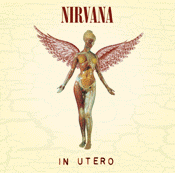
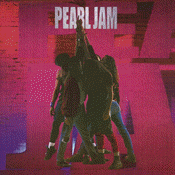
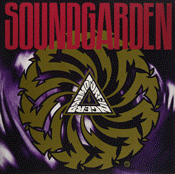
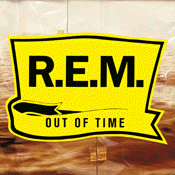
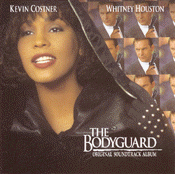
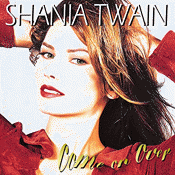
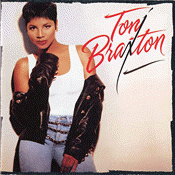
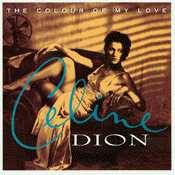
Pop Divas
The Nineties was the decade of Pop Music Divas, these powerhouse singers with incomparable voices and dynamic stage presence dominated the decade. Spanning different genres, female singers like Whitney Houston, Céline Dion, Mariah Carey, Toni Braxton, Madonna, Cher, Brandy, Monica, and Janet Jackson dominated the carts. With her unique vocal range and talents as a songwriter, Mariah Carey was one of the top divas of the decade, breaking Billboard records and accumulating the highest accolades throughout the 1990s. In 1995, Carey became the first female artists to debut at number 1 on the Billboard Hot 100 with her single "Fantasy." Another tremendous talent, Whitney Houston dominated the decade. The gospel singer turned pop-star and dance hit maker is considered to be one of the greatest vocalists of all time. She saw huge success in 1992 with her version of Dolly Parton's "I Will Always Love You" a song from the soundtrack of her film debut, The Bodyguard. Céline Dion, only rivaling Carey and Houston in terms of success, was another 1990s pop diva with a unique voice. Dion is known for her power ballads, in particular the 1997 hit "My Heart Will Go On" from the film Titanic. After her the start of her career in the 1980s as part of the Miami Sound Machine, Gloria Estefan became a formidable solo artist in the 1990s. The Cuban-American artist won three Grammy Awards between 1993 and 2001, all for her Spanish-language albums. Another popular pop diva, Shania Twain, emerged during the decade, coming out of it as one of the best-selling female singers and songwriters of all time. She saw great success with Country-Pop crossover hits like "You're Still the One" and "Man, I Feel Like a Woman" from her 1997 album Come On Over. One of the best-selling R&B artists of all-time, Toni Braxton, also emerged as a popular musician during the decade. Braxton released her self-titled album in 1993 and it won three of her seven Grammy Awards. Already a mega-superstar from the 1980s, Janet Jackson saw continued success in the 1990s as she evolved into a more mature artist, exploring new themes in her albums and contributing more with songwriting. Jackson reached a new level of artistry with her 1997 album The Velvet Rope, an experimental album with huge mainstream success that touched on themes not often seen in pop music, a milestone in her career that many critics believed marked her emergence from the shadow of her pop-star brother Michael Jackson. Several other solo female artists achieved pop superstardom during the decade and their success even inspired an annual televised concert, VH1 Divas which premiered in 1998.
Golden Era Hip Hop
The 1990s are considered the Golden Age of Rap and Hip Hop. The decade saw massive shifts and diversification of the genre, as well as an increase of mainstream recognition and respect for artists. Distinctive styles emerged from the US coasts and various regions throughout the country. Some of the sub-genres that enjoyed popularity during this decade include gangster rap, party rap, and political rap. Because the genre was still considered new, there was constant evolution and innovation happening. Rappers representing different styles and regions saw massive mainstream and critical success. Examples include Tupac, Notorious B.I.G., Queen Latifah, Salt-n-Pepa, De La Soul, NWA, Snoop Dogg, LL Cool J, A Tribe Called Quest, Public Enemy, Eric B. & Rakim, Outkast, Geto Boys, Missy Elliott, and Big Daddy Kane. By the end of the decade many of these artists were considered some of the most popular and successful musicians in the pop music world, transforming rap and hip hop from a fledgling genre into one of the most influential musical movements within pop culture. Many critics believe the Golden Age started to come to an end in the middle of the decade as softer more commercialized hip hop acts gained popularity, signaling a drop in overall artistic quality. Many fans also believe the the era came to an end after the murders of Tupac Shakur in 1996 and the Notorious B.I.G. in 1997, musical rivals and two the brightest stars to emerge from the genre during the decade.
In addition to several popular sub-genres within rap and hip hop, several fusion genres became popular as well such as New Jack Swing, Neo-Soul, and Hip Hop Soul. One of the most popular genres was New Jack Swing which combined the production of hip hop with the sound of R&B. The genre was performed by predominantly Black artists and often mixed elements of funk, soul, and jazz with hip hop and rap. Within this genre there was a strong focus on production, sampling, and creating hit singles. Teddy Riley, Bernard Belle, and Babyface were songwriters and music producers that often associated with the genre. Some of the artists and groups that found success in this sub-genre include Janet Jackson, Bell Biv DeVoe, Bobby Brown, Boyz II Men, Hi-Five, Jade, TLC, Montell Jordan, and Color Me Badd. Another popular sub-genre, Neo-Soul, was also a fusion genre. It began gaining popularity in the 1980s with artists like Prince and Sade but had a much stronger mainstream breakthrough in the mid-1990s with artists like Maxwell, Erykah Badu, Lauryn Hill, D'Angelo, Me'Shell Ndegéocello, Aaliyah, Macy Gray, Eric Benét, and Tony! Toni! Toné!. This genre attracted more singer-songwriter types, focused more on musicianship of the artists, and whole albums in comparison to other popular R&B based genres that focused on producers and singles. Hip Hop Soul was another popular fusion genre within contemporary Hip Hop and R&B that was prominent in the Nineties. This genre was a more straightforward fusion between R&B and soul singing styles with hip hop production. Popular artists that exemplified this sub-genre include Mary J. Blige, Faith Evans, Jodeci, Blackstreet, and TLC. This genre is often associated with music producer Sean "Puff Daddy" Combs.
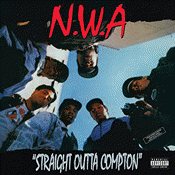
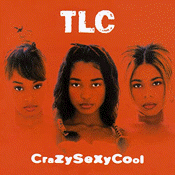
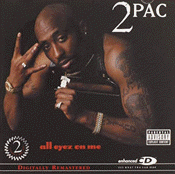
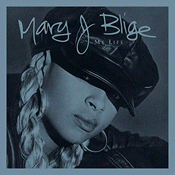
Electronic Dance Music
Electronic Dance Music (EDM) was a new genre that emerged during the 1990s, proving popular among the club scene particularly across Europe, the United Kingdom, and the United States. The music is characterized by having between 120 and 150 beats per minute (bpm), drum machines, synthesizers, and other electronic instruments. It was originally created in the 1980s and saw its origins in Chicago House, Electro music, and the New York Club scene. The genre has roots in African American artists creating dance music in a post-disco world and it saw an expansion in popularity and the proliferation of various sub-genres during the nineties. It was the music of choice for early-1990s "Raves" - sometimes illegal underground dance parties hosted by DJs, often in warehouses. These raves turned into larger more mainstream gatherings with specialized clubs and festivals catering to artists and fans of the EDM genres. Some of the most notable genres within EDM that were popular during the decade include techno, trance, drum and bass, big beat, and breakbeat. By the mid-1990s, EDM had strayed from its American origins and was largely driven by European and British musicians, popularized by pirate radio in the UK. Some of the most popular EDM-associated musical acts of the decade include The Chemical Brothers, the Crystal Method, Fatboy Slim, Deee-Lite, Aphex Twins, Daft Punk, The Prodigy, and Happy Mondays. Some of these artists broke through to mainstream pop music include Fatboy Slim with his 1998 hit "Praise You," Deee-Lite with their 1990 hit "Groove is in the Heart," and The Prodigy's 1996 hit "Firestarter." As the genre gained influence, large commercialized festivals and clubs were organized for fans including several Spiral Tribe dance events, The Eclipse (England's first legal all-night club), Electric Daisy Carnival (1991), the Castlemorton Common Festival (1992), and the Ultra Music Festival (1999).
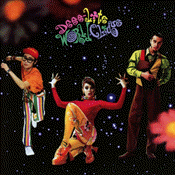
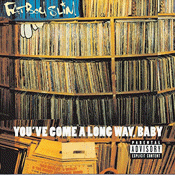
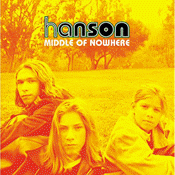
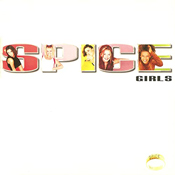
Bubblegum Pop
The late-1990s saw the introduction of the highly commercialized and over-produced bubblegum pop groups and stars. Groups and singers like the Spice Girls, All Saints, NSync, the Backstreet Boys, LFO, 98 Degrees, Destiny's Child, Britney Spears, Christina Aguilera, Robyn, Jessica Simpson, Mandy Moore, and Hanson all saw early success during the decade. The genre really gained momentum in the new millennium, dominating the early 2000s music scene. There was a heavy influx of bubblegum pop artists from about 1997 to 2002. These artists used many other popular genres to draw influence including R&B, Hip Hop, and Dance music. The genre was characterized by the use of autotune, a focus on appearance and fashion, choreography, repetitive lyrics, and the use of sexual innuendo. These artists were often heavily influenced by music producers and record labels, and often featured talents who got their start as children. These artists were typically marketed to teenagers. Many of these pop artists continued to have lucrative careers beyond the 1990s and several who were in groups embarked on successful solo careers or ventured into other realms of the entertainment world outside of music.
Popular Songs Each Year in the 90's
Popular songs from the Nineties Decade, arranged by year but in no particular order. Do you remember listening to these songs on the radio?
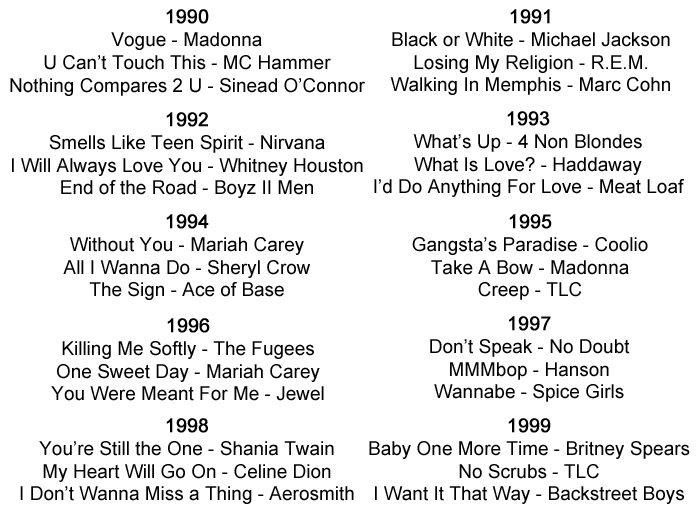
1990 - Vogue - Madonna, (-) Nothing Compares 2 U - Sinead O'Connor, (-) Ice Ice Baby - Vanilla Ice, (-) It Must Have Been Love - Roxette, (-) U Can't Touch This - MC Hammer
1991 - Losing My Religion - R.E.M., (-) Black or White - Michael Jackson, (-) Gonna Make You Sweat - C+C Music Factory, (-) Emotions - Mariah Carey, (-) Enter Sandman - Metallica
1992 - I Will Always Love You - Whitney Houston, (-) Smells Like Teen Spirit - Nirvana, (-) End of the Road - Boyz II Men, (-) Under the Bridge - Red Hot Chili Peppers, (-) Jump - Kris Kross
1993 - All That She Wants - Ace of Base, (-) Dreamlover - Mariah Carey, (-) That's The Way Love Goes - Janet Jackson, (-) What Is Love? - Haddaway, (-) Informer - Snow
1994 - All I Wanna Do - Sheryl Crow, (-) The Power of Love - Celine Dion, (-) I Swear - All-4-One, (-) Loser - Beck, (-) Zombie - The Cranberries
1995 - Gangsta's Paradise - Coolio, (-) Waterfalls - TLC, (-) Kiss from a Rose - Seal, (-) You Oughta Know - Alanis Morissette, (-) Take a Bow - Madonna
1996 - Wannabe - Spice Girls, (-) Macarena - Los Del Rio, (-) Killing Me Softly - The Fugees, (-) Wonderwall - Oasis, (-) Un-Break My Heart - Toni Braxton
1997 - Mmmmbop - Hanson, (-) Don't Speak - No Doubt, (-) Quit Playing Games - Backstreet Boys, (-) Men In Black - Will Smith, (-) Barbie Girl - Aqua
1998 - My Heart Will Go On - Celine Dion, (-) Believe - Cher, (-) The Boy Is Mine - Brandy & Monica, (-) Never Ever - All Saints, (-) Truly Madly Deeply - Savage Garden
1999 - Baby One More Time - Britney Spears, (-) Livin' La Vida Loca - Ricky Martin, (-) No Scrubs - TLC, (-) Genie in a Bottle - Christina Aguilera, (-) If You Had My Love - Jennifer Lopez